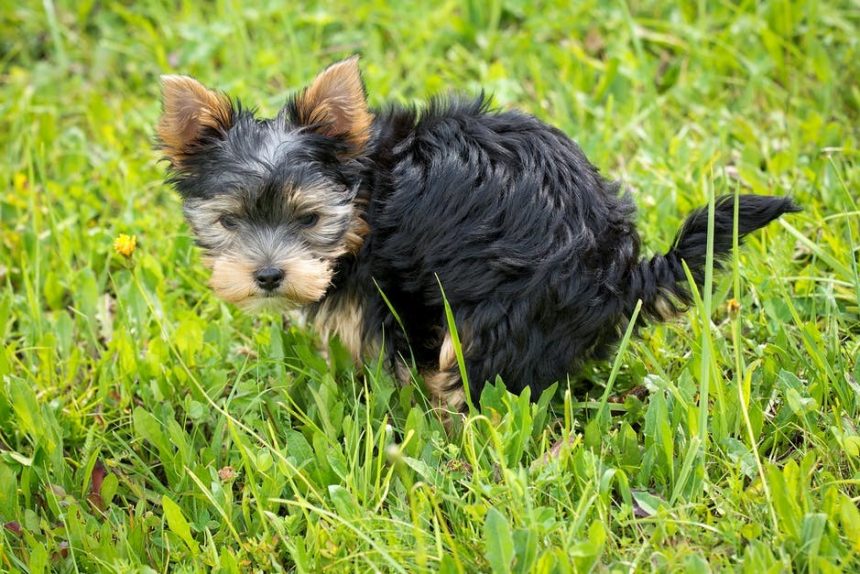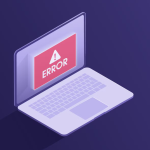Did you know that there are over 450 breeds of dogs?
- 1. Inconsistent Routine
- 2. Lack of Supervision
- 3. Punishing Accidents
- 4. Insufficient Potty Breaks
- 5. Neglecting the Signs
- 6. Using the Wrong Cleaning Products
- 7. Allowing Free Access
- 8. Inadequate Rewards
- 9. Neglecting Health Issues
- 10. Lack of Patience and Consistency
- Avoid These Dog Potty Training Errors – Get Your Pup Potty Trained Today
From tiny yappers to giant lions, there is a dog for any person. From helping blind people to herding sheep, these lovable creatures have a use for any situation.
But did you know that one of their most valuable jobs is helping with house soiling? Dog potty training is a pain, but imagine cleaning your floors 24/7.
Do you want to learn how to correctly potty train your pup? Then read on to learn what typical dog potty training errors you can avoid while going through the process.
1. Inconsistent Routine
Establishing a consistent routine is vital in dog potty training. Dogs are creatures of habit and thrive on structure.
You should set a specific dog feeding schedule, playtime, and potty breaks. This way, you create a predictable environment for your dog.
Consistency helps them understand when it’s time to relieve themselves. This makes it easier for them to associate the designated potty area with the elimination act.
Stick to the routine even on weekends or during busy periods; This will avoid confusing your dog.
2. Lack of Supervision
Do not leave a dog unsupervised during the potty training process. This increases the chances of accidents. Dogs, especially puppies, have limited bladder control and may be unable to hold it for long periods.
Keep a close eye on your dog. This lets you anticipate their needs and guide them to the designated potty area on time.
If you cannot supervise them directly, confine them to a crate or a small, puppy-proofed area. This will ensure they don’t have the opportunity to have accidents around the house.
Supervision allows you to spend quality time with your dog during the potty training. Being present and involved builds trust and strengthens your bond with your furry friend.
This positive interaction enhances the training experience. It also reinforces the idea that you are their guide and companion.
3. Punishing Accidents
Punishing a dog for having accidents is counterproductive. This can create negative associations with the act of eliminating. Dogs do not understand punishment in the same way humans do.
Instead, focus on positive reinforcement to encourage desired behavior. When your dog eliminates in the designated potty area, offer verbal praise. You can also provide treats or affection. This will reinforce the connection between the action and the reward.
Potty training your new puppy requires dedication and effort. But, it is an investment in building a solid foundation for a well-behaved, housebroken dog.
Positive reinforcement motivates dogs to repeat the behavior. This makes potty training more effective and enjoyable for you and your pet.
Give them proper guidance, consistency, and love. This way, you can successfully navigate the potty training process. You can enjoy a clean and harmonious living environment with your furry companion.
4. Insufficient Potty Breaks
Not providing enough opportunities for your dog to relieve itself outside can lead to accidents indoors. Dogs have smaller bladders and higher metabolisms than humans. This is why they require more frequent bathroom breaks.
Plan to take your dog out every few hours, especially after meals, naps, or play sessions. Additionally, pay attention to signs that your dog needs to go. This includes restlessness, circling, or sniffing around.
It is essential to provide enough potty breaks for dogs. This way, you reduce the likelihood of accidents and help your dog develop good habits.
Puppies have smaller bladders and limited bladder control. So they need more frequent bathroom breaks and vigilant supervision.
You should pay attention to their needs and recognize the signs they display when they need to go potty. Also, promptly guiding them to the designated area will set them up for success.
5. Neglecting the Signs
Dogs often exhibit subtle signs when they need to go potty. It is crucial to pay attention to these signals and respond promptly.
Common signs include sniffing the ground, pacing, or suddenly becoming restless. If you notice these behaviors, immediately take your dog to the designated potty area.
It is essential to respond to their signals. This reinforces the connection between their actions and the appropriate place to go potty. This also helps them understand where they should go.
6. Using the Wrong Cleaning Products
Accidents are bound to happen during the potty training process. But cleaning them up properly is essential.
Avoid using ammonia-based cleaners. This is because their scent resembles the urine of dogs for them. This may encourage them to go potty in the same spot again.
Instead, opt for enzymatic cleaners. Use those specifically designed to get rid of pet odors.
These cleaners break down the enzymes in urine. This will effectively remove the odor. It will also minimize the likelihood of your dog getting attracted back to the area.
7. Allowing Free Access
Do not grant your dog unrestricted access to the entire house during potty training. This is because it can be overwhelming and confusing for them.
Start by confining them to a small, puppy-proofed area or using crate training for dogs. This restricted space serves as their den. It will encourage them to hold their bladder until they’re taken to the designated potty area.
Your dog will eventually demonstrate consistent potty habits. When that happens, you can gradually expand their access to other parts of the house under supervision. This controlled freedom helps reinforce good behaviors and prevents accidents.
8. Inadequate Rewards
Rewards are a powerful tool in potty training. When rewarding your dog for potty training, it’s essential to choose incentives. They should be enticing and motivating.
A simple pat on the head or verbal praise may not be enough to keep your dog engaged in the training process. Find high-value treats that your dog loves. Then use them exclusively for potty training purposes.
These treats should be small and quick to eat. They should also be reserved solely for successful elimination in the designated area.
Use such rewards consistently. This way, you can create a positive association between potty training and receiving something enjoyable. This will encourage your dog to repeat the desired behavior.
9. Neglecting Health Issues
Sometimes, accidents can occur due to underlying health issues. Is your dog previously house-trained but suddenly starts having accidents? If so, it’s essential to consider potential medical conditions.
Infections, bladder stones, or other urinary problems can cause dogs to have accidents. This is despite being well-trained.
Do you notice any changes in your dog’s bathroom habits? This can include frequent accidents, difficulty urinating, or signs of discomfort. If you do, consult with your veterinarian.
They can conduct a thorough examination and perform diagnostic tests if necessary. They can also identify any potential health issues. These may affect your dog’s ability to hold its bladder or control its elimination.
Addressing any potential health issues is crucial. It will maintain your dog’s overall well-being.
Not only that, but you can also effectively manage the underlying issue. This will help your dog regain proper potty habits. This will ensure successful potty training.
10. Lack of Patience and Consistency
Potty training is a process that requires patience, consistency, and understanding. It’s important to remember that dogs learn at their own pace. Also, accidents are a natural part of the learning process.
It’s easy to become frustrated or discouraged when slow progress or setbacks occur. But, it’s crucial to remain patient and consistent throughout the training journey.
Stay committed to the established routine. You should also reinforce positive behaviors with rewards and avoid punishment.
You must maintain a calm and positive attitude. This way, you can create an environment that fosters learning. This will also help your dog build confidence in their potty training skills.
Remember that puppies learn at their own pace and may have occasional accidents. That’s why you must remain patient, consistent, and understanding. This way, you create a positive and supportive environment for your puppy to learn and develop good potty habits.
So, if you are potty training a new puppy, follow these tips and avoid common errors. Embrace the rewarding journey of helping your puppy develop into a well-trained, housebroken family member.
Avoid These Dog Potty Training Errors – Get Your Pup Potty Trained Today
Potty training your dog is essential for good behavior and a stress-free household. Despite efforts, even experienced sound dog owners can commit errors. Dog potty training errors could lead to a long and arduous journey.
Avoiding these errors can significantly contribute to a successful and efficient training process. The key to successful potty training with your pooch is patience and consistency. If you are seeing frequent errors, many possible fixes should be considered.
With time, patience, and a little effort, you’ll soon have a well-trained and housebroken companion. Working together, you and your pup can be successful on the potty training journey!
If you enjoyed this article, please take the time to check out some of the other great content on our site.















